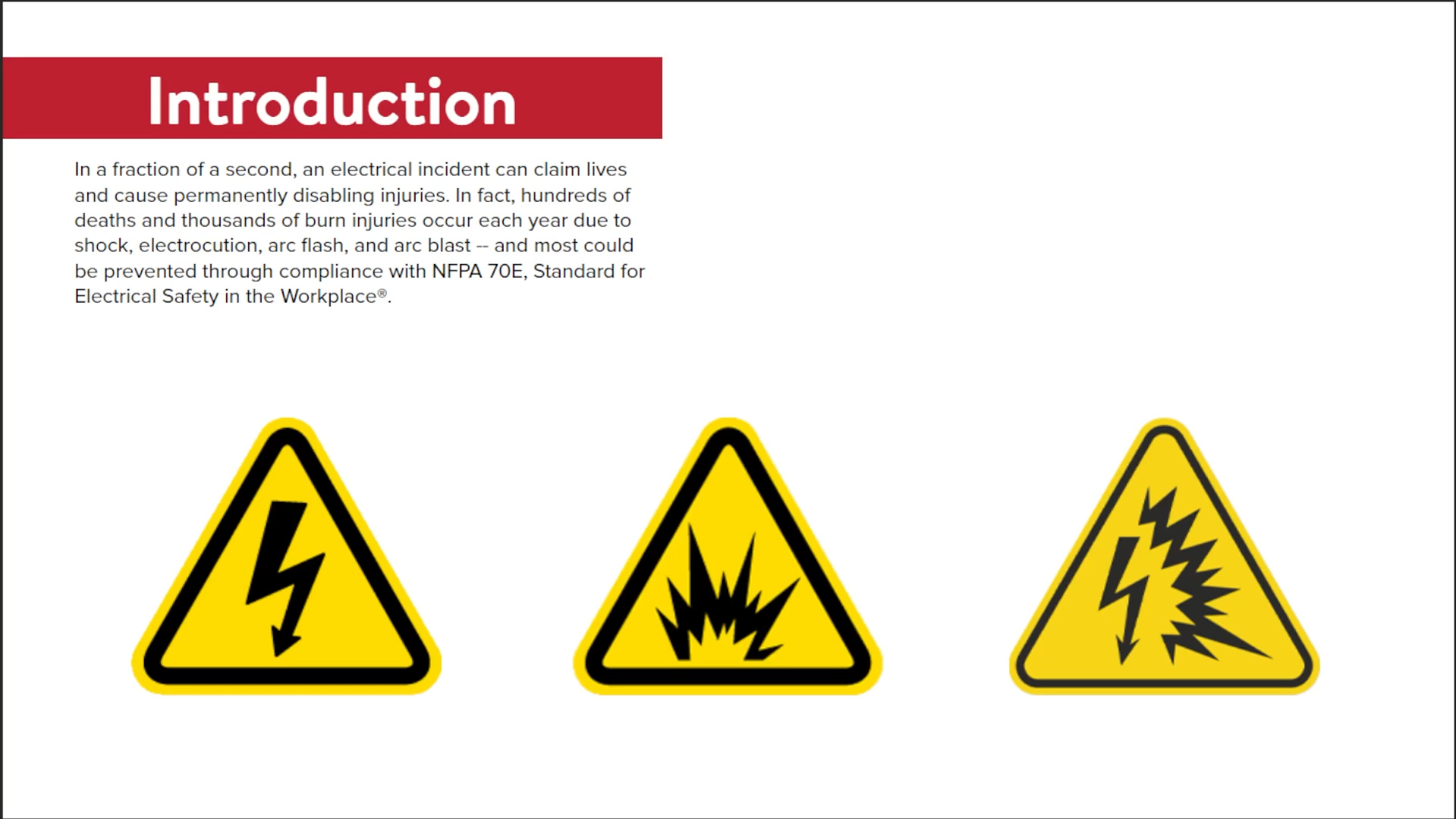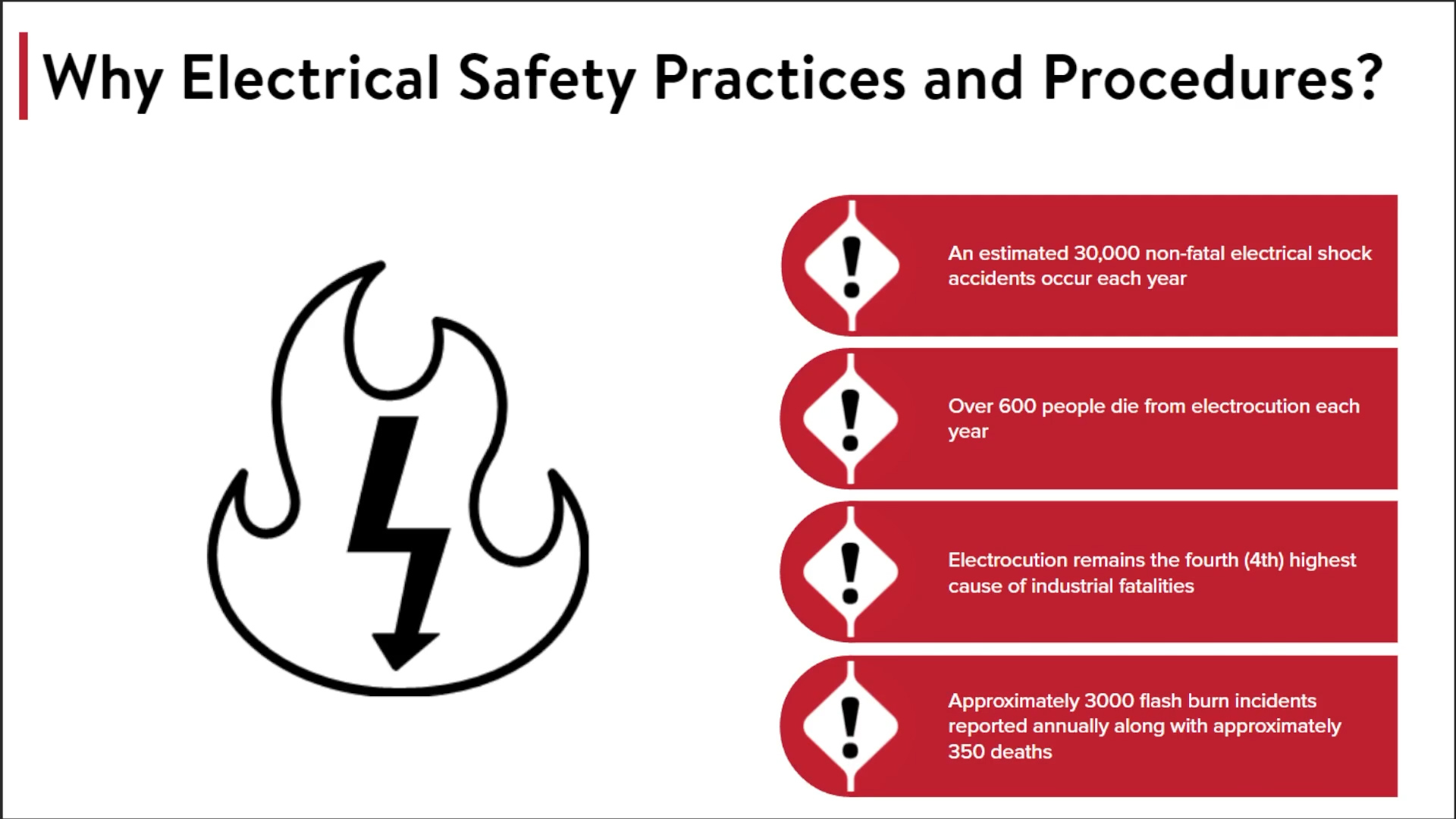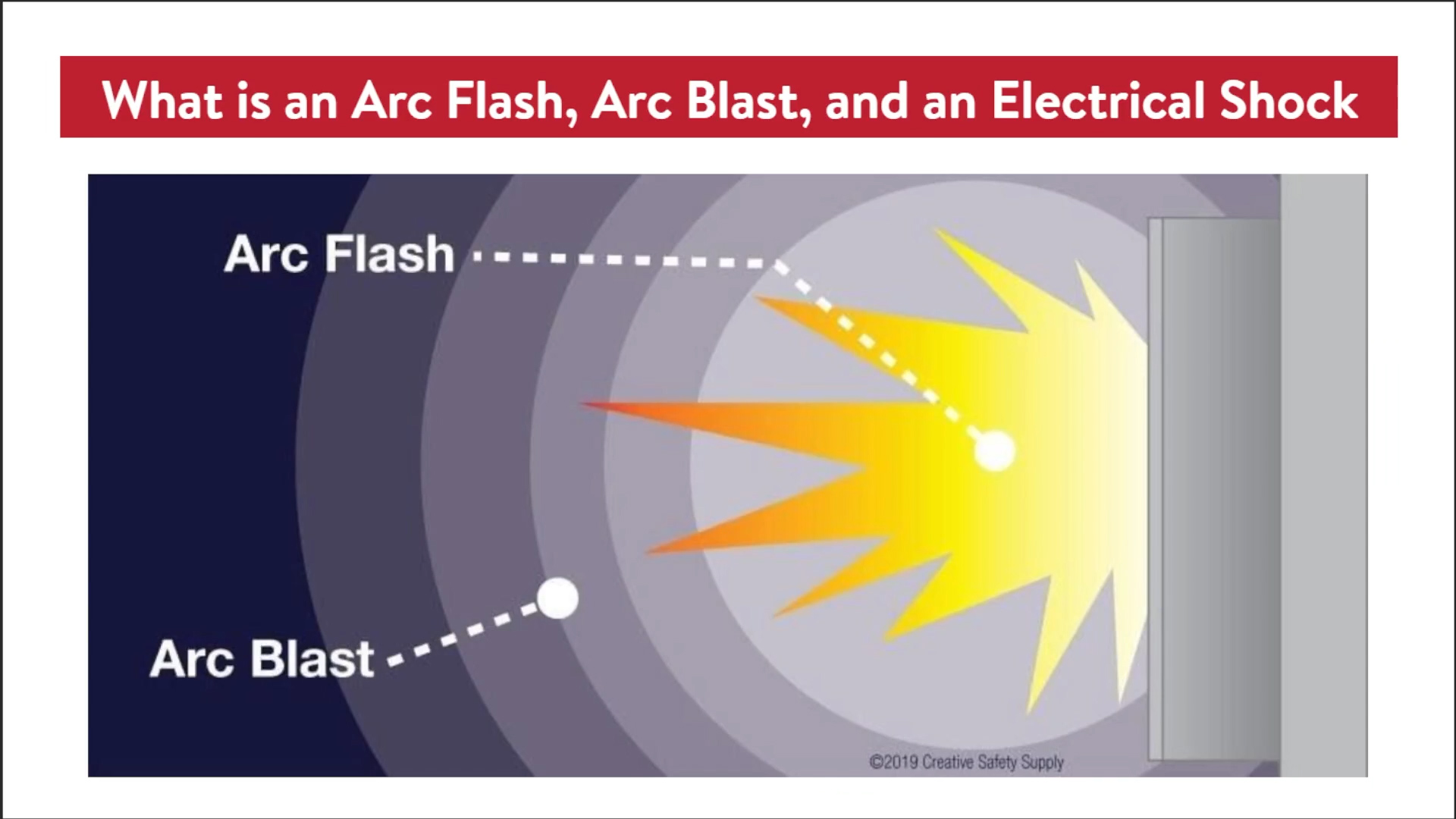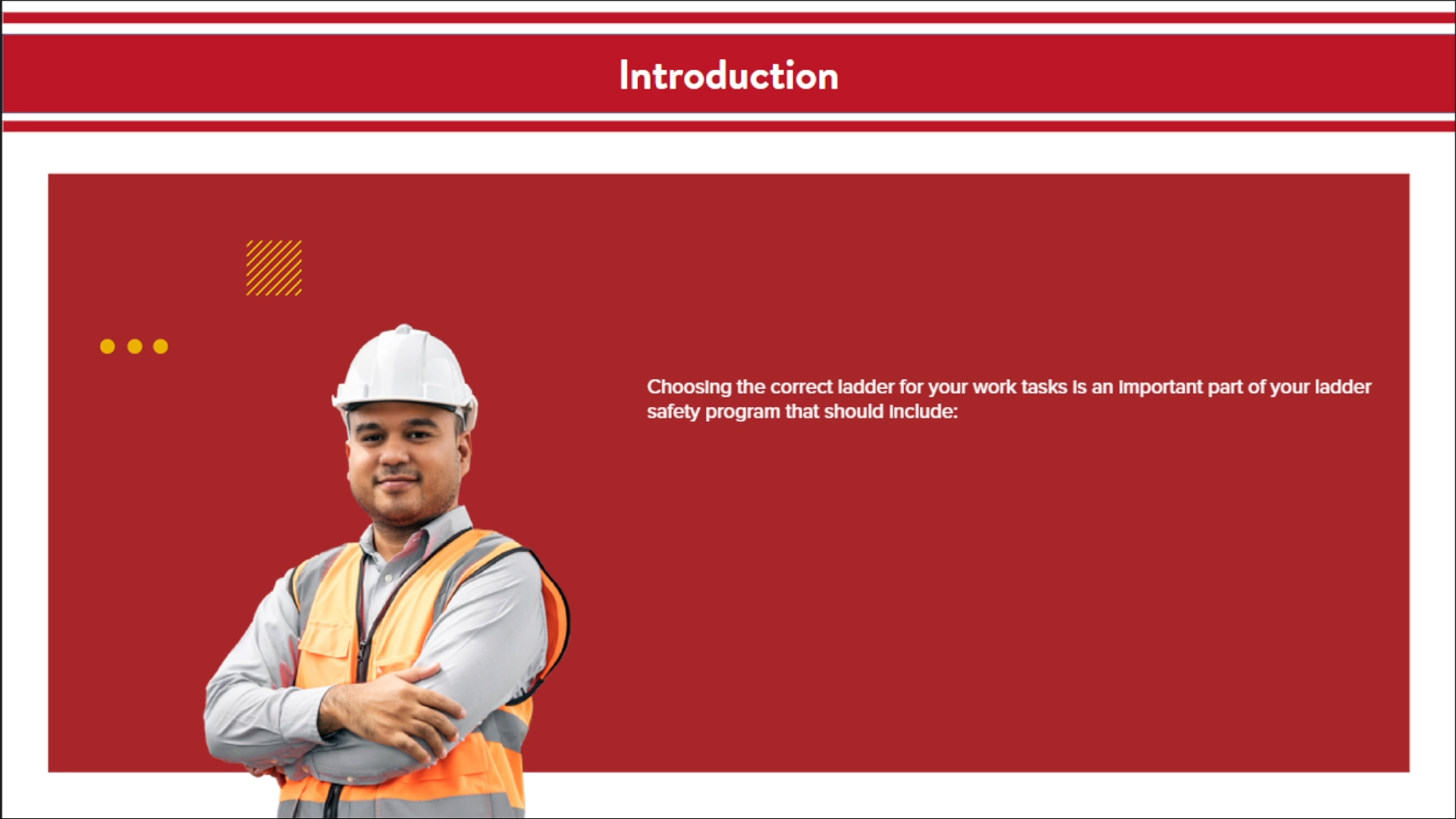This course covers electrical regulations, arc flash/arc blast hazards, arc flash risk analysis, flash protection and approach boundaries, PPE and levels of protective clothing, and safe work practices to protect workers around live and exposed parts.
NFPA 70E Arc Flash
$9.99
Description
What is NFPA 70E (Arc Flash)?
We offer National Fire Protection Association training for electrical safety in the workplace.
For lineman and other utility workers, death by electrocution is a daily hazard that requires attention. In the utility sector, awareness of electrical hazards must be a daily theme for safety and training professionals.
To reduce the risk of injury in the utility industry, trade associations and federal agencies now have many safe work practices and procedures in place to protect employees when working on or near energized electrical equipment and conductors. Current regulations and industry standards are now in place to protect electrical workers from the hazards of shock, electrocution, arc flash, and arc blast.
The two main regulatory bodies that govern electrical safety in the workplace are the National Fire Protection Association (NFPA) and the Occupational Safety and Health Administration (OSHA). The National Fire Protection Association is recognized for providing information and guidelines that protect workers from electrical hazards, while OSHA is the enforcement agency for electrical safety in the workplace.
Industry Standards Governing Electrical Hazards
- NFPA Standards
- 70-NEC
- 70B Maintenance Electrical
- 70E “Standard for Electrical Safety in the Workplace”
To ensure employees have a safe workplace, your company is required to provide electrical safety training to employees who face a risk of electrical hazards that is not reduced to a safe level by the applicable electrical installation requirements
NFPA 70E (Arc Flash Training) Must Include:
- Specific hazards associated with electrical energy.
- Safe work practices and procedures necessary to provide protection from electrical hazards associated with jobs or tasks.
- Identification of relationship between electrical hazards and possible injury.
If there is a big, recent change in the way your workforce operates or interacts with electrical equipment or power generation devices, safety professionals have to make changes to protect the workforce, accordingly.
If supervision or annual inspections indicate that employees are not complying with the safety-related work practices, retaining, or refresher training, is then required. Retraining is also required if new technology, equipment types, or changes in processes alter the safe work practices, or if workers must employ safe work practices that are not normally used during regular job duties.
Additionally, for tasks performed less than once a year, retraining is required before employees go back in the field for the performance of related work.
For example, NFPA 70E 110.2 (E) states employers must document that each employee has received the training required for qualified and unqualified employees.
Training Documentation Requirements
- Include employee names and dates of training.
- Be made when the employee demonstrates proficiency in the work practice involved.
- Be maintained for the duration of the employee’s employment.
Electrical tasks that involve working on or near energized electrical equipment or conductors must be performed only by qualified employees, meaning, employees that have received the necessary training required to safely negotiate specific hazards.
A qualified person is defined as one who has the skills and knowledge related to the construction and operation of the electrical equipment and installations, and has received safety training to recognize and avoid the electrical hazards that might be present with respect to that equipment or work method. This person has received additional training and demonstrates proficiency in working on exposed energized equipment, recognizing the hazards associated with the task or job, and taking precautions needed to prevent injury or death.
A qualified person will also be trained in the proper use of special precautionary techniques and in selecting and using the appropriate personal protective equipment (PPE)—including arc flash, insulating and shielding materials, and insulated tool and test equipment. Finally, a qualified person must have proper training in responding to emergency situations. That last one is very important but often overlooked.
To be trained as a qualified employee, the employee must actually do the work or have ‘hands on’, performance based training. Only trained and qualified employees should ever have access to the space within reach of ‘live’ parts or equipment. NFPA 70E (Arc Flash) requires that only trained and qualified employees can work on or near exposed energized electrical parts and supervise unqualified persons in the vicinity of the hazard.
Another requirement of NFPA 70E (Arc Flash) is the implementation of an overall electrical safety program.
NFPA 70E (Arc Flash) Electrical Safety Program Requirements
- Provide awareness training of electrical hazards that includes shock and arc flash.
- Include administrative and engineering controls that measure and monitor methods and procedures for working within the Limited Approach Boundary of energized electrical conductors and circuit parts 50 volts or more.
- Include a hazard and risk evaluation, and job briefing before each job, for repetitive or similar tasks, and for routine work.
- Direct activity appropriate for the voltage, energy level, and circuit conditions.
An Electrical Safety Program must be audited to ensure principle and procedures are being followed. It is important to make sure that your electrical safety program is frequently reviewed, but also measured for performance. The frequency of audits is determined by the employer and based on the complexity of the procedures and the type of work being covered. However, OSHA does require employers to audit their Safety Programs, which include Electrical Safety Programs, at least annually.
Why SafetyNow?
Not all training is equal. With SafetyNow, learners and leaders will notice the difference in value:
- Quality: Professionally-researched and designed using the latest mobile and responsive technologies
- Convenience: Works instantly on any device, desktop or mobile
- Time savings: What learners need to know, not extra fluff or legalese
- Reporting: Consistent, instant compliance records available anytime
- Support: Customer and learner support included at no charge
- Understanding the difference between arc flash and electric shock
- Understanding hazards, injuries, and indirect consequences related to arc flash and electric shock
- Comprehending the way approach protection boundaries are determined
- Connecting approach boundary criteria with worker qualifications
- Recognizing necessary training and skills for qualified workers
- Identifying the primary elements of an electrical safety program
- Understanding the purpose of lock and tag procedures
- Acknowledging different types of lock and tag devices
- Understanding basic procedural steps for lock and tag
- Learning the requirements for the use of test instruments and equipment
- Remembering the requirements, benefits, and components of a job briefing
- Observing the requirements, benefits, and components of an energized work permit
- Acknowledging PPE responsibilities and requirements related to work around energized electrical equipment and parts
- Any Learning Management System (LMS) Use with any SCORM, AICC, xAPI, TinCan, HTML5, or other LMS (learning management system).
- Any Device Desktop, laptop, tablet, or mobile phone – it simply works, everywhere.
- Engaging Professionally-developed, including an on-screen host and modern, easy-to-understand text, media, and voiceovers.
- Unlimited Attempts Each module can be taken as many times as required to get a passing grade. Unlike our competitor’s courses, if you get an answer wrong, you are redirected to the exact eLearning segment you struggled with… you don’t need to go through the entire module again, just the one part you need a refresher on.
Only logged in customers who have purchased this product may leave a review.














Reviews
There are no reviews yet.